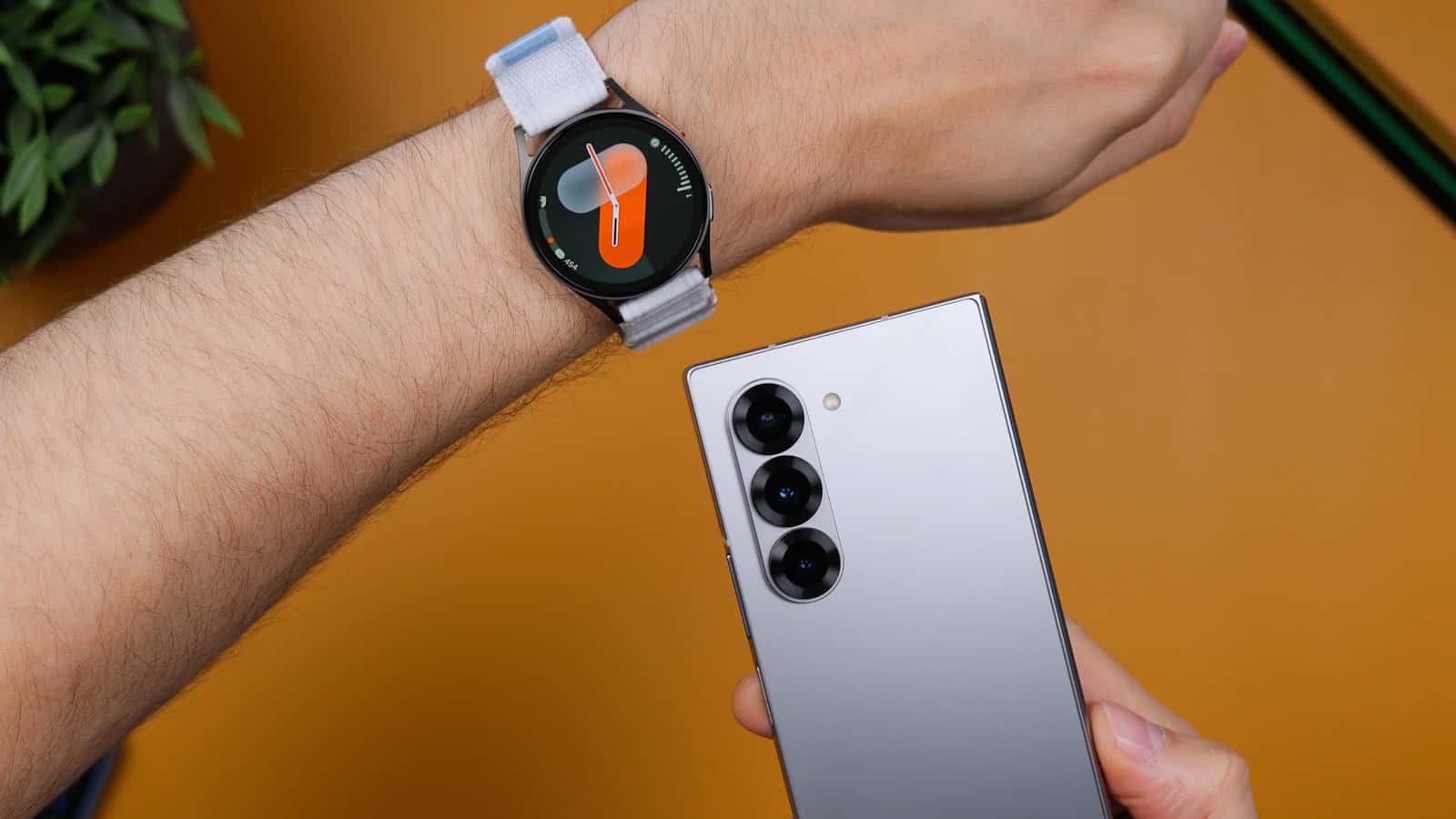Samsung smartwatches blend style and function, giving you smartphone-like capabilities on your wrist. Over time, issues like software bugs or physical damage may occur. If your Samsung smartwatch needs repair, it’s important to know your options to get it working again. The Samsung Galaxy Watch is a powerful smartwatch, but it can encounter problems. This guide provides troubleshooting tips and solutions for common issues such as charging problems, screen glitches, battery drain, and software updates. Following these steps can often resolve the problems.
If issues persist, seek professional help from Samsung or an authorized repair center. Repair services for Samsung smartwatches, including the Galaxy Watch series, are available through various channels. You can choose Samsung’s official support or visit authorized third-party repair centers that offer free diagnostics and fast service. Understanding your smartwatch’s functionality can also help determine whether a problem requires professional repair or can be resolved through troubleshooting.
Get Your Samsung Galaxy Watch Ticking Again: DIY Fixes for Common Problems
Restarting Your Watch: A Simple Solution for Minor Glitches
Just like your phone, a quick restart can often fix minor problems with your Samsung Galaxy Watch. Hold down the Home (or Power) button until the Power menu shows up. Tap “Power off” and wait for the watch to shut down fully. Then, press and hold the Home (or Power) button again to turn it back on. This can often clear up temporary issues and get your watch running smoothly again.
Software Updates: Keep Your Watch Up-to-Date for Optimal Performance
Software updates bring bug fixes, new features, and improved performance to your Samsung Galaxy Watch. Connect your watch to the Galaxy Wearable app on your phone, go to “Settings,” scroll down to “Software update,” and tap to see if any updates are available. If there are, follow the instructions to update your watch’s software. It’s a good idea to check for updates regularly to keep your watch running at its best.
Charging Problems: Troubleshooting Tips
If your Samsung Galaxy Watch isn’t charging, there are a few things to check:
- Check the charger: Make sure the charging dock and cable are connected properly and that the dock is plugged into a working power source.
- Clean the contacts: Use a soft, dry cloth to clean the charging contacts on both the watch and the dock. Dust or debris can interfere with charging.
- Use the original charger: If possible, use the charger that came with your watch. Third-party chargers may not work correctly.
- Restart your watch: A restart can sometimes resolve charging issues.
If none of these solutions work, you may need to have your watch’s battery or charging port checked by a professional.
Fixing Screen Issues: From Unresponsiveness to Flickering
Screen problems can be frustrating, but here are some things to try:
- Unresponsive screen: Clean the screen, restart the watch, or try a factory reset (back up your data first).
- Flickering or display problems: Adjust the brightness, restart the watch, or check for software updates.
- Cracked screen: This will likely require professional repair.
Battery Life Woes: Extending Your Watch’s Power
If your Samsung Galaxy Watch’s battery is draining too quickly, consider these tips:
- Reduce brightness: Lower the screen brightness to conserve power.
- Turn off Always On Display: This feature can drain the battery faster.
- Disable unused features: Turn off Wi-Fi, GPS, and other features you don’t need.
- Close unused apps: Apps running in the background can consume power.
- Check for updates: Sometimes, software updates can improve battery life.
Key Takeaways
- Samsung smartwatches combine smartphone functions in a wearable format.
- Professional repair services are vital for maintaining optimal watch performance.
- Awareness of smartwatch functionality aids in managing potential issues.
Understanding Your Samsung Watch
When dealing with a Samsung smartwatch, it is essential to know its model, operating system, and warranty details. This knowledge ensures effective use and support for the wearable device.
Identifying Your Model
Samsung’s lineup includes various models, each with unique features and design. Key models include the Samsung Galaxy Watch, Galaxy Watch Active, and the Galaxy Fit series, ranging from the Gear S to the latest Galaxy Watch 5 and the potential upcoming Galaxy Watch 6. Here’s how to identify your model:
- Check the Watch Settings: Navigate to ‘About Watch’ in the settings menu.
- Look on the Back: The model number is printed on the back of the watch.
- Use Your Samsung Account: Registered devices are listed under your account.
Features and Operating System
Most Samsung smartwatches run on the Tizen operating system, apart from the latest models transitioning to Wear OS. Distinct features across these models may include:
- Samsung Pay: A contactless payment system
- Notifications: Alerts for messages, calls, and apps
- Sensors: Arrays for fitness and health tracking
- Bluetooth: Wireless connectivity to other devices
The specific combination of features varies by model, with newer versions typically expanding on the capabilities of predecessors.
Warranty and Support
Most Samsung smartwatches come with a 1-year limited warranty covering manufacturer defects. Here’s what you should know:
- Check Warranty Status: Accessible through the Samsung Members App or website.
- Limited Warranty: Understand that it covers specific warranty conditions only.
- Samsung Support: Offers assistance via chat, phone, or in-person at service centers.
Be sure to understand the scope of your warranty and support options to address any issues efficiently.
Tizen vs. Wear OS: Understanding the Differences
Samsung Galaxy Watches have transitioned from Tizen OS to Wear OS.
| Feature | Tizen OS | Wear OS |
|---|---|---|
| App Ecosystem | Smaller selection of apps | Wider variety of apps, including Google services |
| Watch Face Customization | Extensive customization options | Good customization, but may be limited compared to Tizen |
| Battery Life | Generally longer battery life | Can vary depending on usage and settings |
| Compatibility | Primarily compatible with Samsung devices | Works with Android and iOS devices |
Essential Settings: Optimize Your Watch’s Functions
Familiarize yourself with these key settings on your Samsung Galaxy Watch:
- Display: Adjust brightness, timeout, and Always On Display.
- Sound: Control volume, vibration, and notification sounds.
- Connections: Manage Wi-Fi, Bluetooth, NFC, and cellular (if applicable).
- Apps: View installed apps and manage permissions.
- Battery: Monitor battery usage and optimize settings to extend battery life.
Troubleshooting Tips for Specific Models
Samsung Galaxy Watch 6
The Galaxy Watch 6 may experience specific issues due to its new features:
- Temperature sensor issues: If the temperature sensor is inaccurate, try restarting the watch or resetting it to factory settings.
- Battery drain with new features: Disable features like SpO2 tracking or skin temperature monitoring if not needed to conserve battery.
- ECG app problems: Ensure the app is up-to-date and you’re following the instructions correctly.
Samsung Galaxy Watch 5
The Galaxy Watch 5 might encounter:
- BioActive Sensor issues: Check for proper skin contact and cleanliness. Restarting the watch may also help.
- GPS accuracy problems: Update the watch software and ensure a clear view of the sky for better GPS reception.
- Compatibility issues with Wear OS apps: Some apps may not be optimized for the Watch 5 yet. Check for updates or try alternative apps.
Samsung Watch Sleep Tracking: Optimize Your Rest
Samsung Galaxy Watches offer sleep tracking to monitor your sleep patterns. Ensure accurate tracking by:
- Wearing the watch snugly: A loose fit can affect sensor readings.
- Enabling sleep mode: This activates the sleep tracking feature and minimizes disturbances.
- Reviewing sleep data: Analyze your sleep patterns in the Samsung Health app.
Samsung Watch Screen Repair: What to Do
If your Samsung Galaxy Watch screen cracks or gets damaged:
- Contact Samsung support: They can offer repair services or replacement options.
- Visit an authorized repair center: Professional repair may be necessary for complex damage.
- Check for warranty coverage: Your watch may be covered under warranty for repairs or replacements.
If a repair is needed, ensure the service center uses genuine Samsung parts to maintain your watch’s quality and performance.
FAQs
Can I repair my watch myself?
You can try simple fixes, but more complex issues may require professional repair.
How much does it cost to repair a Samsung Galaxy Watch?
The cost varies depending on the issue and the repair service.
Where can I get my watch repaired?
Samsung offers repair services, or you can find authorized repair centers.
How long does it take to repair a watch?
Repair time depends on the issue and the repair service’s workload.
Additional Tips for Keeping Your Watch in Top Shape
- Protect your watch: Use a screen protector and case to prevent damage.
- Clean regularly: Wipe down your watch with a soft, dry cloth to remove sweat and debris.
- Avoid extreme temperatures: High temperatures can damage the battery.
- Charge properly: Use the original charger and avoid overcharging.
By following these tips and familiarizing yourself with the settings and troubleshooting techniques, you can keep your Samsung Galaxy Watch running smoothly and ensure a satisfying user experience.







